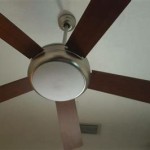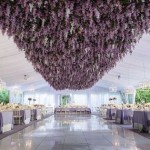Why Old Houses Have High Ceilings
Strolling through the streets lined with historic homes, one cannot help but notice their soaring ceilings. These architectural features, often reaching heights of 10 feet or more, stand in stark contrast to the standard 8-foot ceilings found in modern homes. While they add a sense of grandeur and spaciousness to these older dwellings, the reasons behind their prevalence extend beyond aesthetics.
1. Natural Cooling and Ventilation
Before the advent of air conditioning, high ceilings played a crucial role in regulating indoor temperatures during the hot summer months. Warm air naturally rises, so the extra height allowed for a larger volume of air to circulate within the house. Additionally, many old houses feature transom windows positioned above the doorways, which facilitate cross-ventilation by allowing air to flow from one room to another. The combination of high ceilings and proper ventilation created a more comfortable living environment, reducing the reliance on artificial cooling methods.
2. Smoke and Fumes Dispersal
Historically, fireplaces were the primary source of heat in homes. However, they also produced smoke, soot, and other fumes. High ceilings provided an ample space for these pollutants to rise and dissipate before they could circulate throughout the living areas. This helped to maintain a cleaner and healthier indoor environment, especially during the winter months when fireplaces were in constant use.
3. Architectural Style and Refinement
In the past, high ceilings were considered a mark of architectural elegance and status. They were often featured in grand homes and public buildings, reflecting the wealth and sophistication of their owners. The soaring heights created an imposing presence and conveyed a sense of spaciousness and luxury that was highly valued.
4. Natural Light Optimization
Tall windows, often reaching almost to the ceiling, were commonly used in old houses. This design maximized the amount of natural light entering the rooms, reducing the need for artificial lighting during the day. The ample sunlight also helped to brighten and warm the living spaces, creating a more inviting and cheerful atmosphere.
5. Energy Efficiency
While high ceilings may seem counterintuitive in terms of energy efficiency, they can actually contribute to lower energy consumption. During the summer, the larger volume of air in the room absorbs heat, preventing it from being trapped near the floor. This reduces the need for air conditioning. In the winter, the warm air rises and collects near the ceiling, creating a natural insulation layer that helps to keep the room warm.
6. Accommodating Tall Furniture
In the past, furniture was often taller and more ornate than their modern counterparts. High ceilings allowed for these pieces to be displayed without feeling cramped or overwhelming. The spaciousness of the rooms provided ample headroom for elaborate chandeliers, heavy curtains, and other decorative elements that were popular in older homes.
Conclusion
The high ceilings in old houses are not merely aesthetic choices; they serve a multitude of practical and functional purposes. From natural cooling and ventilation to smoke dispersal and energy efficiency, these architectural features reflect the ingenuity and craftsmanship of past builders who sought to create comfortable, healthy, and visually appealing living spaces. While modern building practices may favor lower ceilings, the charm and timeless elegance of high ceilings continue to captivate homeowners and architects alike.

High Ceilings In Old Houses Looking For Documentation Page 2 The Historic District
Why Do Many Old Buildings Have Tall Ceilings If They Were Former Factories Converted To Condos I Understand But What About Houses Was This A Sign Of Wealth Quora

Why Do Old Houses Have High Ceilings Village Cottage

Why Do Old Houses Have Tall Ceilings Solved
Why Are House Ceilings So Low In England Quora

Vaulted Ceilings 101 History Pros Cons And Inspirational Examples

How To Take Advantage Of High Ceilings In Renovations Archdaily

Classic Or Craze High Ceilings St Louis Homes Lifestyles

How To Take Advantage Of High Ceilings In Renovations Archdaily

High Ceilings And How To Live With Them Bob Vila
Related Posts








